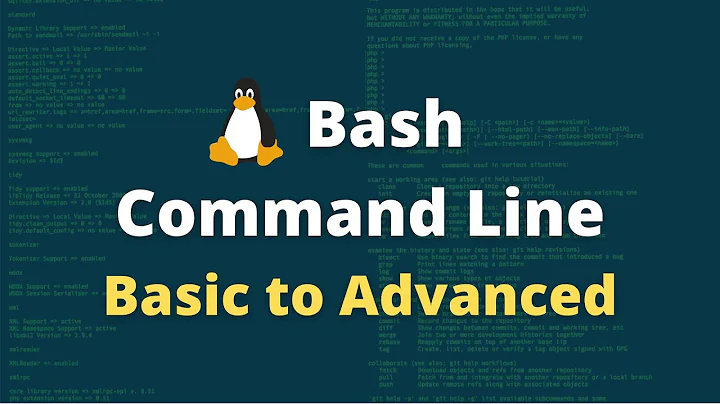How to interpret the bash command "usage" syntax?
Solution 1
For anyone trying to understand what usage output means, the best way is to man man.
seriously :-) Take the time to learn the conventions, it really helps.
The following conventions apply to the SYNOPSIS section and can be used
as a guide in other sections.
bold text type exactly as shown.
italic text replace with appropriate argument.
[-abc] any or all arguments within [ ] are optional.
-a|-b options delimited by | cannot be used together.
argument ... argument is repeatable.
[expression] ... entire expression within [ ] is repeatable.
Solution 2
First of all, while there are general conventions, they are not uniformly applied.
- In this case, it's saying that if you use
-R(indicating "recursion"), then you can use either-H,-L, or-P. If you don't use-R, then those options are not relevant. - Yes, case is almost always important. So usually
-hand-Hdo completely different things. - The square brackets generally indicate that an option or argument is "optional". (The things with hyphens in front of them are "options", the words without hyphens are arguments.) Without brackets the option or argument is generally required. In your example, both "source_file" and "target_directory" are required. The "..." indicates that the previous argument can be repeated.
Other points worth noting:
- The vertical bar indicates "OR". So
[-fi | -n]indicates you can use either-fand/or-ibut not in combination with-n. - Grouped options in brackets indicate you can use any of them. So
[-apvX]indicates you can use any combination of those options. They don't even need to be smashed together. So-a -v -pwould be a valid combination.
Related videos on Youtube
raoulsson
CTO at Contovista AG Before: CEO at Zorp Technologies Inc., San Francisco, ...until Google Lens came out... Experienced software engineer and teamlead looking to build/enable useful, delightful, and meaningful products. Passionate, hard-worker interested in contributing to team-oriented, strong engineering cultures. Proven track record of hiring and running successful teams.
Updated on September 17, 2022Comments
-
 raoulsson almost 2 years
raoulsson almost 2 yearsHow exactly do you have to interpret the output of a commands "usage" output, in bash for example.
For example, on my OS X,
cpgives meusage: cp [-R [-H | -L | -P]] [-fi | -n] [-apvX] source_file target_file cp [-R [-H | -L | -P]] [-fi | -n] [-apvX] source_file ... target_directory- What does the nested options, like -H within -R, indicate?
- Does upper and lower case have any meaning?
- When is an argument optional, required?
I need to implement a telnet command line against a program of mine and I would like to get this straight.
-
Warner over 14 years+1 deleting my post as redundant.
-
 Wildcard over 8 years
Wildcard over 8 yearsman manon CentOS 6.6 doesn't have this section; nor does the version ofman manon Mac OS X 10.7.4. Where can I find it? -
 Wildcard over 8 yearsFound it, it's
Wildcard over 8 yearsFound it, it'sman man-pagesin CentOS andman manpageson Mac OS X (which uses BSD commands). -
 Addison almost 7 yearsThis answer, as well as the
Addison almost 7 yearsThis answer, as well as theman mancommand doesn't seem to cover cases where the input must be one of the items in an enumeration. For example<env> - must be one of [dev | test | uat | perf | prod]








